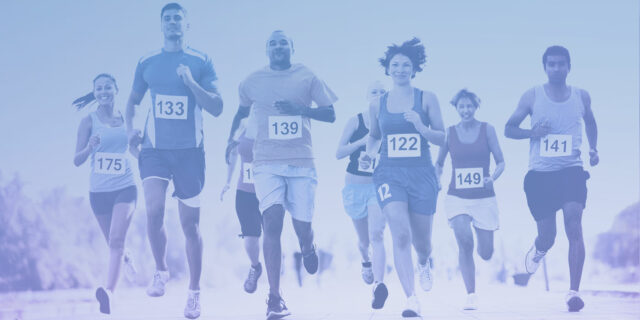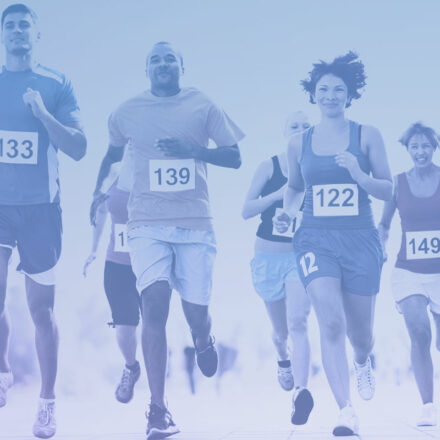Walter Isaacson:
It’s two in the afternoon on Friday, April 10, 1896, and 17 runners are taking their place on the starting line for an historic race. It’s the first marathon of the first games of the modern Olympiad and each competitor is hoping to take home some hardware. Waiting for them 25 miles away in a newly rebuilt stadium in Athens are 80,000 Greek fans hoping they have something to cheer about. The Olympic games are back in Greece for the first time in 1,600 years, but things are not going well for the home team. American athletes have been dominating in track and field, and disillusionment is setting in.
Walter Isaacson:
Foreign runners reached the podium in the 800 and 1500 meter races, but none have ever run a marathon. The Greeks, however, have been training hard for this race and it’s their last chance to salvage some national pride. The starting gun goes off with a bang and as expected, the foreign runners are off to a quick start. At the halfway point, they’re holding down the top four spots, but at least one Greek runner isn’t concerned. Spyridon Louis is a slight 23-year-old farmer who jogs about 16 miles a day carrying water from his village to Athens. At the halfway point of the race, Louis reaches a small town and pauses for a glass of wine.
Walter Isaacson:
He’s not leading the pack, but he’s feeling confident. With six miles to go, Louis moves into second place. One mile later, he takes the lead. This is now his race. When he enters the stadium, the crowd bursts into thunderous applause. The crown prince of Greece and his brother jumped down from the royal box and run the last lap with Louis who crosses the finish line with a time of two hours and 59 minutes to secure the gold medal. Today, more than one million people around the world run marathons every year and all of them owe a debt of gratitude to a young Greek farmer.
Walter Isaacson:
But Spiradon Louis did more than secure glory for Greece that day in 1896, he also established the marathon as the ultimate test for runners. I’m Walter Isaacson, and you’re listening to Trailblazers, an original podcast from Dell Technologies.
Speaker 2:
This fastest human being in the world when he flashes down the track for a new world record.
Speaker 3:
Friendly competition, a desire to win.
Speaker 2:
49% of the physical defects were foot troubles. Running for Japan run and the fastest marathon in the history of that classic.
Roger Robinson:
I think it’s an evolutionary constant that humans needed to run to survive and it’s built into our system.
Walter Isaacson:
Roger Robinson is the author of When Running Made History.
Roger Robinson:
Where by [inaudible 00:04:03] we get food and escape being food by running and I think running is absolutely essential to the human body.
Walter Isaacson:
Roger Robinson believes humans were born to run and he’s living proof of this idea. He’s competed internationally for England and for his adopted country of New Zealand. At 50, he was still running marathons in under three hours. And today at age 82, even after two knee replacements, he still runs about five hours a week. Robinson thinks running comes naturally to humans and that’s been the case ever since our earliest ancestors stood up on two legs and outran our predators. Look around the animal kingdom and you’ll find a lot of mammals that can sprint faster than we can, but none that can run as far.
Walter Isaacson:
It’s our evolutionary advantage. But if we were really born to run, why do so many runners, including Robinson, find themselves with damaged knees, ankles, feet, and hips. He believes it’s because of something else that humans were born to do, compete.
Roger Robinson:
The difference in competitive running is that we’re pushing for excellence. We’re pushing all of us, looking to run as well, as fast, as long, whatever as we can and giving ourselves different challenges. You could say that sometimes takes us over the limit, but I’m cool about that because excellence always involves finding your limits.
Walter Isaacson:
The first Olympic games held in Greece in 776 BC hosted many foot races, but none longer than a few miles. It wasn’t until 1894 that the idea of having men test their endurance over 25 miles or approximately 42 kilometers received serious consideration. Spyridon Louis’ victory in that 1896 Olympic marathon inspired US Olympic team manager to return to his native Boston with the idea of starting an annual 25 mile race. The first Boston Marathon was run in April 1897. 15 runners started the race, 10 finished, but it would take another 70 years before the idea of marathon running really caught on in the United States.
Walter Isaacson:
Community athletic and civic booster clubs throughout the Northeast sponsored marathons in the 1940s and 1950s, but they attracted few participants.
Jos Hermens:
Let’s be honest. It’s a crazy distance. I think a nice distance would’ve been 30k would’ve been perfect. We should have called the 30k marathon and we could avoid a lot of suffering if the marathon would be only around 30, 35k.
Walter Isaacson:
Jos Hermens knows all about that crazy distance. In the 1970s, he was one of the best, middle and long distance runners in the world and competed for his native Holland in the 1976 Olympics in Montreal. The year before he set a world record by running more than 20 kilometers in one hour. Like most elite runners of his day, Hermens had no coach, no trainer, no real training plan other than to run as often and as far as he possibly could.
Jos Hermens:
So our goal was to make many, many miles. I mean, I make as a 5,000 and 10,000 meter track runner, I ran 200 miles a week, which nowadays would be considered as totally crazy, but that was I didn’t have really have a coach. I picked my programs from magazines and books,
Walter Isaacson:
Hermens also recalls that back then no one paid much attention to hydration and nutrition, even drinking water during a long run was frowned upon.
Jos Hermens:
I remember also the early days that we took Coca-Cola that the people were drinking Coca-Cola because of the coffee and the sugar. There was no sports drinks. My sports drink was if I did my long run some two hours, three hours, what I took, I took a bottle of milk with me. And then afterwards, we drink one liter milk. That was our sports drink.
Walter Isaacson:
In 1978 when he was 28-years-old, Herman suffered in Achilles heel injury that cut short his running career just as he was reaching his prime. He thinks poor training practices likely contributed to the injury. A few years later, he started Global Sports Communication, a management and marketing company that today represents some of the world’s top runners, including Eliud Kipchoge, the current record holder in the marathon. Hermens has seen a lot of changes during his half century in the sport, but none have been more dramatic than its transformation from a fringe hobby practiced by a few diehards to an activity enjoyed today by more than 50 million Americans.
Jos Hermens:
Before, nobody was running. If you were running and training, they were making jokes like, they catch the burglar, so like you were running away from the police, that kind of jokes in those days were very popular when you were running around. But still slowly, ’70s, ’80s then slowly running became more and more popular.
Walter Isaacson:
Several things contributed to the running boom that swept the United States in the 1970s. Competitive running got a huge lift when Frank Shorter became the first American in 64 years to win the Olympic marathon. He did that in Munich in 1972. Shorter became a genuine American sports star. Running a marathon was suddenly something that thousands of Americans aspired to do. The first New York City Marathon in 1970 attracted only 127 runners. By 1976, there were more than 2,000 people standing at the starting line. Then in 1977, a new book called The Complete Book of Running sold more than a million copies.
Walter Isaacson:
People were running to keep fit and just for the fun of it. And even when they did enter races, they weren’t doing it to win. They were says, Roger Robinson, just wanting to have a good time.
Roger Robinson:
America invented the concept of the road race as a party. And I had been a road runner for 30 years before I went to America. We run as hard as we could and then we hung out afterwards and had a beer. Suddenly in America, there were balloons, there were people in yellow uniforms, there were tables covered with food, covered with watermelons and orange juice and coffee and bagels and anything you could have. And it was a feast and it was a hangout and it was the whole atmosphere was completely different and so there’s a whole community benefit.
Roger Robinson:
And sometimes I’ve said that modern running has become a little bit like one of the functions that the church used to have, where you get individual spiritual fulfillment, but doing it in community with other people.
Walter Isaacson:
In America, that community of runners ultimately included two groups who are often not welcome in other sports, women and African Americans.
Gary Corbitt:
I didn’t have no idea the significance of what my father was doing during those years. I knew he was a good runner, but it took years later to just really understand the full impact.
Walter Isaacson:
Gary Corbitt was never much of a runner himself, but his father, Ted Corbitt was at trailblazer both on and off the track. Often called the father of American distance running, Ted Corbitt was the first black American to run an Olympic marathon. By the time he finally stopped running in his 70s, Ted Corbitt had competed in 199 marathons and ultra-marathons. He also made a huge contribution to making long distance running a legitimate sport.
Gary Corbitt:
For a sport to be legitimate, you have to be able to verify records. For races, a 10 mile race or a 15k race, it needs to be that distance within few really feet. And that wasn’t the case. The sport 10 mile race could be either 10 and a half miles or nine miles, just was not any uniformity in terms of how courses were measured. My father led the effort to standardize courses.
Walter Isaacson:
Until the 1960s, race organizers measured courses by getting in their cars and driving around until the odometer showed they had covered the required distance. But this method produced wildly inconsistent measurements. As a result, there could be record set for individual races, such as the Boston Marathon, but no one could claim to be the fastest marathon runner in the world. Ted Corbitt helped change that by getting out of the car and onto a bicycle with a counter on the wheel and measuring out exactly 26.2 miles.
Gary Corbitt:
People would ride bicycles and they would have a device would be on the wheel to measure the counters, the number of times the wheel moved. You would calibrate that before doing that so you knew how many times it would take to get a mile or less. That’s my father’s greatest accomplishment to the sport.
Walter Isaacson:
In 2021, the New York City Parks Department designated the popular 6.2 mile loop around Central Park as the Ted Corbitt Loop to honor his contribution to the city and the sport of long distance running. In Boston, another trail blazer helped to open the door or for women runners by showing up where she wasn’t supposed to be. Her name was Kathrine Switzer. Although in the entry form for the 1967 Boston Marathon, she was simply listed as KV Switzer.
Kathrine Switzer:
There was nothing about gender on the entry form or in the rule book with the marathon and my coach insisted that when I went to Boston I had to register for the race. So I signed the entry form, but I signed it KV Switzer, not to defraud them, but that’s how I had been signing my name. And they obviously thought it was from a man.
Walter Isaacson:
Women had never been allowed in America’s oldest marathon, which is probably why officials didn’t bother to explicitly prohibit them on the entry form. 20-year-old Kathrine Switzer showed up on a cold morning in 1967 ready to make history, but one race official had other ideas. When he discovered that a woman had registered and was running the race, he hopped aboard the press car, found Switzer on the course and attempted to rip off her bib in full view of photographers.
Kathrine Switzer:
I had my choice of stepping off the course or finishing the race. One of the most important decisions I ever made in my life was to finish that race. I knew if I didn’t finish that race, I would set women’s running way back and also I would live out a life of bitterness thinking I wished I’d done that. And I’ll tell you the truth, I’d run 31 miles in practice two weeks before, and I knew I could do it. So why am I going to step off the course?
Walter Isaacson:
Switzer finished the Boston Marathon in a time of four hours and 20 minutes. And the pictures of her fighting off the race official who attempted to remove her bib quickly became an iconic image in the fight for women’s equality.
Kathrine Switzer:
That was a real rallying cry for the status of women in sports and it really brought people together saying, hey, she should be allowed to run. The officials at Boston did not think that way. But let’s look at it this way, I was 20-years-old and this official was 65. He’s going to have a completely different mindset. I said, I’m angry about it, but how can I be really angry at somebody who’s a product of his time. My job is to change people’s attitudes, and that’s what I really have devoted my life to doing.
Walter Isaacson:
It would take another five years before Boston officially allowed women to run the marathon and another 17 years before a women’s marathon became part of the Olympics. But Kathrine Switzer had opened a door for women runners that could never be closed. Today, about 45% of American marathoners are women and Kathrine Switzer is still one of them. The running boom of the 1970s was aided by pioneering athletes like Ted Corby and Kathrine Switzer who helped open the door for people of color and women. But the growth of the sports popularity was also helped by significant improvement in that most basic piece of running technology, the shoe.
Walter Isaacson:
When Roger Robinson began running in the 1950s, he wore cheap canvas shoes with rubber souls that were actually designed for beach wear. Ted Corbitt would sometimes wear loafers on his 20 mile training runs. And Jos Hermens described the shoe he was wearing in the early 1970s as car tires. The reality was that with so few people involved in road running the big athletic shoe companies of the day, Adidas and Puma, didn’t see much point in designing products for a tiny niche market, but that started to change in the late 1960s in Eugene, Oregon with a man named Bill Bowerman.
Walter Isaacson:
Wouter Hoogkamer is an assistant professor of biomechanics at the University of Massachusetts Amherst and a running shoe researcher.
Wouter Hoogkamer:
Bowerman was the track coach at the University of Oregon. And like any coach that you see nowadays that’s really dedicated, he was trying to find the best ways to improve the performance of his athletes, specifically at that point realized that could be improvements made by changing the footwear and that’s sort of how we started trying to change that.
Walter Isaacson:
Bowerman was convinced that a lighter shoe would allow his athletes to run faster. To find an outer soul that would both improve traction and reduce weight, he experimented with pouring a rubbery compound into his wife’s waffle iron. The result was a revolutionary new shoe that combined the so-called waffle outer soul with a lightweight foam middle soul and a nylon upper soul. Phil Knight, a member of the Oregon track team, saw a business opportunity in his coach’s new shoes, and started a company to market them. That company eventually became known as Nike.
Walter Isaacson:
Today, sales of footwear exceed $13 billion a year in the US. Researchers like Hoogkamer have continued to develop new shoes that would allow both elite and weekend runners to go faster with greater comfort and less risk of injury. But while Bill Bowerman was focused on the weight of the shoe, today the emphasis lies elsewhere.
Wouter Hoogkamer:
For a very long time, all the major brands were really focused on making the shoes as light as possible, which then resulted always in minimal use of foam. More recently, we started to see that there’s sort of the trade off between added mass or the weight of the shoe, but also the cushioning or the comfort. You can save some energy by having the shoe take up the impact rather than actively using your muscles to do that. So now, we’re seeing the trade off, which then in recent years has been really exploited to not only have a softer landing, but also use high grade foams that allow you to land softer, but also give some of that mechanical energy back and that then even outperforms reductions in mass.
Walter Isaacson:
Into 2017, Hoogkamer was part of a team of researchers asked by Nike to evaluate a new shoe that the company had developed. It was called the Vapor Fly and featured a full length curved carbon fiber plate embedded in the midsole and lightweight highly resilient foam. Runners wearing the Vapor Fly had already posted spectacular results at the 2016 Rio Olympics and Nike believed that their super shoe could help achieve one of the sport’s most elusive goals, a marathon completed in under two hours. Hoogkamer and his group were asked to determine how much energy a runner wearing this new shoe would actually save.
Wouter Hoogkamer:
What we did at that point, we looked at two sort of classic state of the art, the best marathon shoes that we had today were very light, minimal foam and elite runners have been setting world records in those shoes. And we compare that to this new prototype that Nike developed, which then included a lot more foam combined with the carbon fiber plate. And we saw that for all 18 runners, they all improved. They all used less energy when running in the prototype shoe and they did that at all the different speeds. And on average for the group mean the difference was 4%.
Wouter Hoogkamer:
But most often we saw very small increments, maybe 1%, one and a half, but now all of a sudden we saw as large as 4%.
Walter Isaacson:
In 2019 Eliud Kipchoge, the two time Olympic marathon champion, became the first human to run a marathon in under two hours. His time was one hour 59 minutes and 40 seconds. He was wearing an updated version of the Nike Vapor fly shoe with the carbon plate and even more foam than the original version. Shoe technology has clearly come a long way since Bill Bowerman was making rubber souls in his waffle iron, but technological innovation in running goes well beyond shoe science. The Vapor Fly super shoe is a recent technological innovation that is geared towards helping elite athletes break world records.
Walter Isaacson:
But weekend joggers have not been neglected. They’re more interested in avoiding injuries than setting records.
Reed Ferber:
We did a survey of almost 700 runners and the number one reason people use technology during running is to avoid injury. So they themselves are trying to dig deep into this data and pull out those pieces they feel are most important to help them prevent injuries.
Walter Isaacson:
Reed Ferber is director of the University of Calgary’s Running Injury Clinic. He’s been studying trends in running injuries over several decades, and he’s noticed a disturbing pattern. Despite all the advances in technology and in our understanding of the biomechanics of running, the numbers haven’t really changed. About half of runners got injured in the mid 1980s, about half get injured today. Ferber puts part of the blame on running researchers like himself who have paid too much attention to what runners do on treadmills in their labs and not enough on what actually happened out on the trail.
Walter Isaacson:
But that’s the beginning to change thanks to innovations in wearable technology.
Reed Ferber:
So my research starting about a little over 12 years ago, we shifted everything to collect data outside the laboratory because nobody gets injured in my lab on my treadmill. People get injured out on the trail. So wearable technology has afforded us the very powerful opportunity to collect scientific grade data from runners on the running trail for every run and every step. So I think now we’re at the beginning stages of really being able to influence the number of injuries that runners are sustaining.
Walter Isaacson:
Ferber believes most running injuries are caused by training errors, runners going faster or farther than their bodies can handle or changing the way they run to compensate for aches and pains. But until recently, there’s been no way for analysts to alert runners about potential problems. Now there is and it goes way beyond smart watches and GPS trackers.
Reed Ferber:
We’re now starting to see sensorized shoes. So shoes that have and insoles that have pressure receptors in them that are GPS enabled, so we can start getting more information from the foot ground interface. Running shorts are having sensors embedded within them. So it’s not a device now that you’re putting on yourself, it’s the shorts themselves that are providing the information. And those can provide information that is actually far more granular than just your watch itself. It can tell you what your temperature is. Your shirt can actually tell you your breathing rate.
Reed Ferber:
So once you start putting all that data together and fusing that information together, you start to develop a complex picture, then you can start boiling it down to a simple term, such as here are the three factors that changed most to push you outside of your typical running pattern.
Walter Isaacson:
Ferber believe gathering and analyzing data from wearable technology is the key to reducing running injuries. He’s even started something called the Wearable Technology Citizen Science Program to train the next generation of wearable technology analysts.
Reed Ferber:
I actually think that we’re on the verge of being able to afford them the ability to run more injury free, achieve their goals of running. And that’s good for everybody. That’s good for the healthcare system. That’s good for the person’s health, not just their physiological, but their mental wellbeing as well. We know that when a runner gets injured, their quality of life goes down. So if I’m called a running researcher, I’ll take it, but really I’m researching how to keep people running until they’re 100.
Walter Isaacson:
Smart shoes, smart socks, smart shorts, smart shorts. Where do we go from here? Wouter Hoogkamer thinks the next advance in running shoe science might be 3D printed shoes individually fitted to every runner’s foot. Running was once the simplest and most primitive of human activities. It’s now become a more multi billion dollar industry, a laboratory at the cutting edge of research into smart technology, material science and biomechanics. But ask anyone involved in the sport from the most elite level to the weekend jogger, and they’ll tell you, it’s not technology that makes a runner, it’s brains, heart, grit, and an unswerving commitment to do the hard work necessary to meet your goals.
Walter Isaacson:
That was true in the times of Spyridon Louis and it remains true in the times of Eliud Kipchoge. I’m Walter Isaacson, and you’ve been listening to Trailblazers, an original podcast from Dell Technologies. If you’d like to learn more about the guests on today’s show, please visit delltechnologies.com/trailblazers. Thanks for listening.
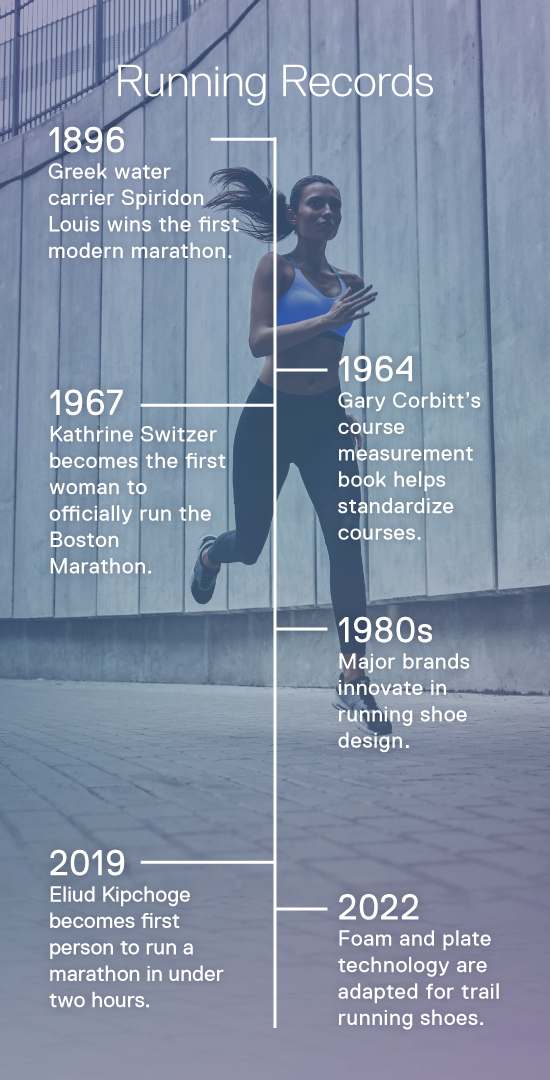
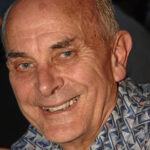 Roger Robinson
redefined the social and cultural history of the running movement with his book When Running Made History (2018). Born in the UK in 1939, he ran for England and later for New Zealand, where armed with a Cambridge PhD, he worked as a senior University educator and literary scholar.
Roger Robinson
redefined the social and cultural history of the running movement with his book When Running Made History (2018). Born in the UK in 1939, he ran for England and later for New Zealand, where armed with a Cambridge PhD, he worked as a senior University educator and literary scholar.
 Jos Hermens
was one of the best middle and long-distance runners in the world in the 1970s. He competed for the Netherlands in the 1976 Olympics in Montreal and the year before, he set a world record by running more than 20 kilometers in one hour. Hermens founded Global Sports Communication in 1985 to help other athletes pursue their dreams.
Jos Hermens
was one of the best middle and long-distance runners in the world in the 1970s. He competed for the Netherlands in the 1976 Olympics in Montreal and the year before, he set a world record by running more than 20 kilometers in one hour. Hermens founded Global Sports Communication in 1985 to help other athletes pursue their dreams.
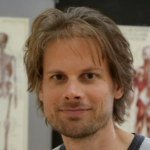 Wouter Hoogkamer
Ph.D. is an assistant professor in the Department of Kinesiology at the University of Massachusetts, Amherst, where he runs the Integrative Locomotion Laboratory (UMILL). He is a running shoe researcher who did a study on the Nike Vaporfly.
Wouter Hoogkamer
Ph.D. is an assistant professor in the Department of Kinesiology at the University of Massachusetts, Amherst, where he runs the Integrative Locomotion Laboratory (UMILL). He is a running shoe researcher who did a study on the Nike Vaporfly.
 Kathrine Switzer
is an iconic athlete, Emmy-winning broadcaster and social causes advocate. As the first woman to register in and run the Boston Marathon in 1967, she was attacked in the race by an angry official who tried to rip off her bib number and throw her out of the race. She finished the 26.2 mile distance anyway and went on to win the 1974 NY City Marathon. She is the author of three books, including her memoir, Marathon Woman.
Kathrine Switzer
is an iconic athlete, Emmy-winning broadcaster and social causes advocate. As the first woman to register in and run the Boston Marathon in 1967, she was attacked in the race by an angry official who tried to rip off her bib number and throw her out of the race. She finished the 26.2 mile distance anyway and went on to win the 1974 NY City Marathon. She is the author of three books, including her memoir, Marathon Woman.
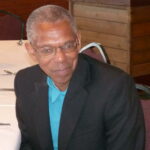 Gary Corbitt
is the son of Ted Corbitt, the “father of American distance running,” and the first black American to run an Olympic marathon. After a 38-year broadcast research career, Gary saw many aspects of distance running history being overlooked. He has become a running historian to both honor his late father Ted Corbitt (1919 – 2007) and the many other pioneers who invented the modern-day sport of road running.
Gary Corbitt
is the son of Ted Corbitt, the “father of American distance running,” and the first black American to run an Olympic marathon. After a 38-year broadcast research career, Gary saw many aspects of distance running history being overlooked. He has become a running historian to both honor his late father Ted Corbitt (1919 – 2007) and the many other pioneers who invented the modern-day sport of road running.
 Dr. Reed Ferber
is a Professor in the Faculty of Kinesiology at the University of Calgary. He is internationally recognized as a leading expert in gait biomechanics research.
Dr. Reed Ferber
is a Professor in the Faculty of Kinesiology at the University of Calgary. He is internationally recognized as a leading expert in gait biomechanics research.
